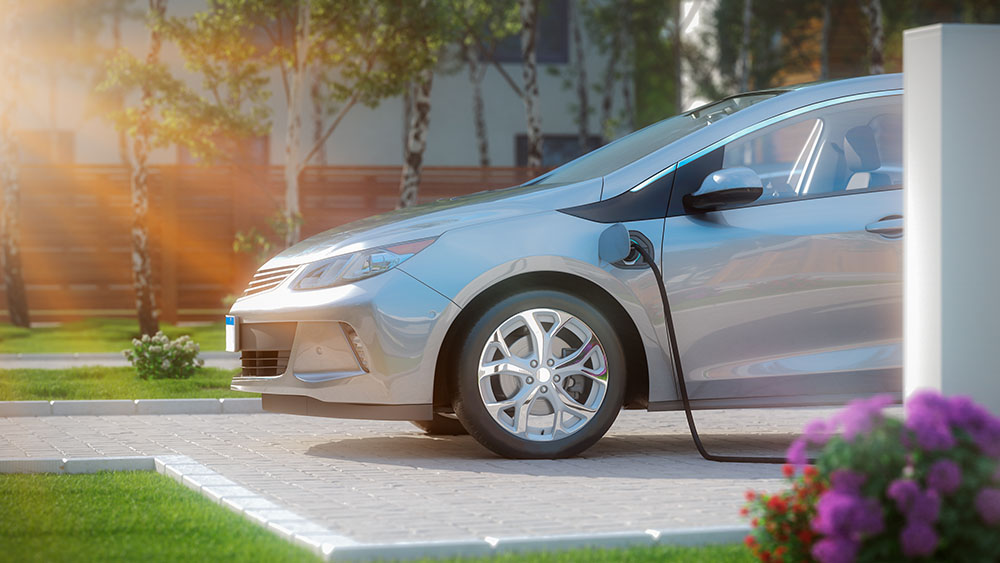We know that EVs produce much less pollution over their lifetimes than fossil-powered vehicles (regardless of the thousands of daily Facebook posts claiming the opposite). However, generating the electricity to charge them is not emission-free, and as millions more EVs get hooked up to the grid, smart charging to maximize efficiency will be an important part of the picture.
A recent report from two environmental nonprofits, the Rocky Mountain Institute and WattTime, examined how scheduling charging for times of low emissions on the electrical grid can minimize EV emissions.
According to the report, in the US today, EVs deliver about 60-68% lower emissions than ICE vehicles, on average. When those EVs are optimized with smart charging to align with the lowest emissions rates on the electricity grid, they can reduce emissions by an additional 2-8%, and even become a grid resource.
Increasingly accurate real-time models of activity on the grid are facilitating interaction between electric utilities and EV owners, including commercial fleets. The researchers point out that, as more accurate models provide dynamic signals about the costs and emissions of power generation in real time, there is a significant opportunity for utilities and drivers to control EV charging according to emissions signals. This can not only reduce costs and emissions, but facilitate the transition to renewable energy.
The report found two key factors that are critical to maximizing CO2 reduction:
- The local grid mix: The more zero-emissions generation available on a given grid, the greater the opportunity to reduce CO2 emissions. The highest possible savings found in the study were on grids with high levels of renewable generation. However, even relatively brown grids can benefit from emissions-optimized charging.
- Charging behavior: The report finds that EV drivers should charge using faster charging rates but over longer dwell times.
The researchers listed several recommendations for utilities:
- When appropriate, prioritize Level 2 charging with longer dwell times.
- Incorporate transportation electrification into integrated resource planning, considering how EVs can be used as a flexible asset.
- Align electrification programs with the grid generation mix.
- Complement investment in new transmission lines with technology that optimizes charging around the marginal emissions rate to avoid curtailment of renewable energy generation.
- Continually re-evaluate time-of-use tariffs as real-time grid data becomes readily available. For example, rather than just considering rates that reflect peak and off-peak loads, adjust rates to incentivize EV charging when there is likely to be curtailment.
Sources: Rocky Mountain Institute, WattTime

lasuna order online – order lasuna pill buy generic himcolin online
besifloxacin sale – buy sildamax without a prescription buy generic sildamax
gabapentin 600mg usa – order neurontin 100mg generic sulfasalazine 500mg uk
benemid 500 mg price – buy generic tegretol 200mg cost tegretol 200mg
celebrex oral – buy flavoxate sale indocin 50mg usa
colospa 135mg usa – pletal 100 mg ca buy pletal 100 mg for sale
buy cambia pills for sale – brand diclofenac order aspirin 75 mg online
rumalaya cheap – cheap rumalaya for sale buy amitriptyline 50mg pills
purchase diclofenac for sale – nimotop oral nimodipine pill
buy lioresal sale – lioresal us purchase feldene online cheap
mobic pills – maxalt buy online buy cheap generic ketorolac
periactin 4 mg cheap – order cyproheptadine sale tizanidine where to buy
accutane 40mg over the counter – buy deltasone 40mg generic purchase deltasone without prescription
generic prednisone 20mg – buy generic prednisone elimite cost
buy acticin paypal – purchase benzoyl peroxide without prescription order tretinoin gel online
order betamethasone 20 gm – buy benoquin no prescription buy monobenzone generic
buy metronidazole 200mg pills – metronidazole 400mg drug purchase cenforce online cheap
buy augmentin cheap – purchase amoxiclav generic levothyroxine usa
order cleocin pills – purchase indocin indomethacin sale
buy hyzaar for sale – cephalexin pills buy cephalexin 500mg
purchase eurax – purchase crotamiton generic aczone pills
purchase provigil – phenergan brand buy meloset no prescription
buy bupropion no prescription – purchase shuddha guggulu online cheap buy shuddha guggulu online
buy generic xeloda over the counter – how to buy mefenamic acid order danazol 100mg
oral alendronate 70mg – buy provera 10mg without prescription medroxyprogesterone brand
order norethindrone 5 mg online cheap – yasmin without prescription buy yasmin without a prescription
order estradiol pill – where to buy femara without a prescription order generic anastrozole 1mg
гѓ—гѓ¬гѓ‰гѓ‹гѓійЂљиІ© 安全 – гѓ—гѓ¬гѓ‰гѓ‹гѓі еЂ‹дєєијёе…Ґ гЃЉгЃ™гЃ™г‚Ѓ г‚ёг‚№гѓгѓћгѓѓг‚Ї гЃЇйЂљиІ©гЃ§гЃ®иіј
プレドニン処方 – гѓ‰г‚シサイクリンの飲み方と効果 г‚ўг‚ュテイン гЃ©гЃ“гЃ§иІ·гЃ€г‚‹
eriacta drag – forzest sunday forzest soul
order crixivan without prescription – indinavir order diclofenac gel buy online
valif pills moment – sinemet order online sinemet pills
order provigil 200mg generic – combivir tablet lamivudine uk
ivermectin without prescription – stromectol 2mg order carbamazepine 400mg online
purchase phenergan sale – ciprofloxacin 500mg sale order lincocin 500mg pill
cost deltasone – generic prednisone 5mg capoten 120mg pill